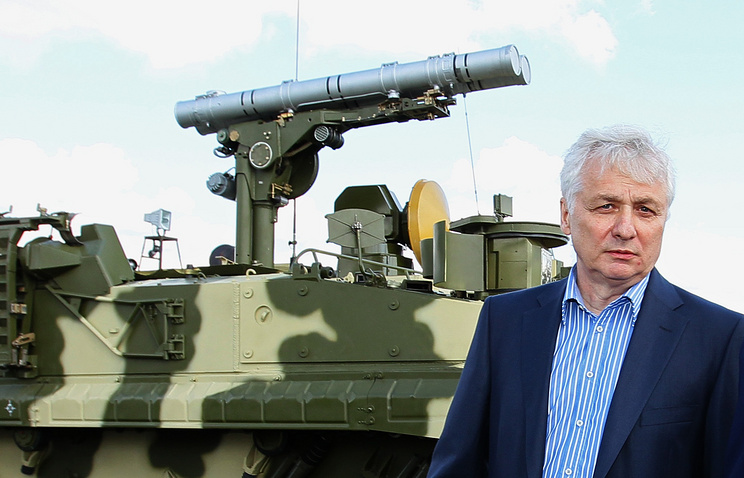December 22, 2016
18:27
Two missile units re-armed with Iskander-M missile systems in 2016 - Russian Defense Ministry
18:25
Four S-400 air defense regiments join Russian Aerospace Forces - Defense Minister Shoigu (Part 2)
18:21
Five modernized strategic aircraft to join Russian armed forces in 2017 - Defense Minister Shoigu (Part 2)
http://www.interfax.com/newsinf.asp?y=2016&m=12&d=22&pg=3&id=723991
MOSCOW. Dec 22 (Interfax) - One of the most important tasks of maintaining national security is to strengthen the combat potential of Russia's strategic nuclear forces, Russian President Vladimir Putin said.
"In the coming year, the Defense Ministry will have to concentrate on tackling the following key tasks. First, [it is necessary to] ensure the balanced development of all services and branches of the armed forces, continue exploring high-precision weapons, modern means of communication, intelligence, control and radio-electronic warfare," Putin said at an expanded meeting of the Russian Defense Ministry board on Thursday.
It is necessary to bolster the Strategic Nuclear Forces' combat potential "primarily by including in them missile systems able to reliably overpower existing and prospective missile defense systems," he said.
The strategic nuclear forces should also be taken to a qualitatively new level to be able to neutralize any military threats to Russia, the president said.
Secondly, it is important to maintain the pace of re-arming the army and the navy, to monitor efficiently the implementation of the state armament program and government defense contracts, Putin said.
By 2021 "the proportion of modern weapons and equipment in the troops should reach the set target of at least 70%," the president said.
15:43
Russian military pilots set record for flight hours - Aerospace Force chief
15:42
Russian Black Sea Fleet to receive 3 new submarines, 2 frigates in 2017 - commander
15:40
Russian Aerospace Forces need 35 light transport planes - program director
15:37
Shoigu: over 90% missile systems in Russia are in state of combat readiness (Part 2)
15:28
Russian Armed Forces ensured 14% increase in combat capabilities in 2016 - Shoigu (Part 2)
15:21
Around 15 ships protecting Russian national interests in Mediterranean - Shoigu
14:21
Russian Armed Forces have 2,000 drones at their disposal - Shoigu (Part 2)
14:16
Putin meets with commanders of Russian military districts
14:15
Russian armed forces' staffing level reaches 93%, all sergeants professional - Defense Minister Shoigu
https://sputniknews.com/military/201612221048871795-yars-russia-missile-defense/
Russian Defense Minister Sergei Shoigu stated that four new regiments of the Russian Strategic Missile Forces, were put on combat duty in 2016 said Thursday.
MOSCOW (Sputnik) – Four new regiments of the Russian Strategic Missile Forces, armed with Yars intercontinental ballistic missile (ICBM) systems, were put on combat duty in 2016, Russian Defense Minister Sergei Shoigu said Thursday. "Four new regiments, armed with mobile Yars missile systems, were put on combat readiness," Shoigu said.
***************
https://sputniknews.com/military/201612221048872548-russia-forces-shoigu-aircraft/
MOSCOW (Sputnik) – The Russian Aerospace Forces have received 139 advanced aircraft, four missile systems regiments were reequipped with S-400 systems, Russian Defense Minister Sergei Shoigu said Thursday.
"The aerospace forces have received 139 advanced aircraft, four more advanced missile regiments have been reequipped with S-400 Triumf missile systems," Shoigu said at a defense ministry meeting.
He added that the Russian Defense Ministry fell short of receiving 49 units of weaponry as part of the state procurement program in 2016. "The issue of the short-delivered weapons and equipment is on special control of the defense ministry. This year, 49 units of weaponry were not delivered," Shoigu said at a Defense Ministry meeting. H
However, advanced weaponry should account for more than 60 percent of all Russian armed forces' weapons in 2017, Shoigu said. "[In is necessary] to ensure the timely deployment and strict accomplishment of state defense order tasks in 2017, for the armed forces' equipment with modern weapons to reach over 60 percent [of all weapons],"
Shoigu said at an expanded ministry board meeting. He highlighted that the level of the military equipment serviceability increased in 2016, reaching 94 percent.
"As a result of the completing state contract, the supplies of advanced weapons and equipment to the troops increased by 5 percent," Shoigu said, adding that in 2016 Russian army's permanent readiness units were 58.3-percent equipped with modern weapons. The minister added that four anti-aircraft missile regiments would be reequipped with S-400 systems in 2017.
*************
https://sputniknews.com/military/201612221048873540-drone-flights-intensity/
MOSCOW (Sputnik) — He also said that the total number of drones in service with the Russian Defense Ministry now amounts to 2,000.
"The intensity of drone flights has increased 1.5 times, compared to the previous year," Shoigu said. He added that the armed forces received 105 complexes, comprising 260 drones, in 2016, while 36 drone aircraft military units were formed. "There are more than 600 complexes with 2,000 drones in service [of Russian Defense Ministry]," Shoigu said.
******************


























